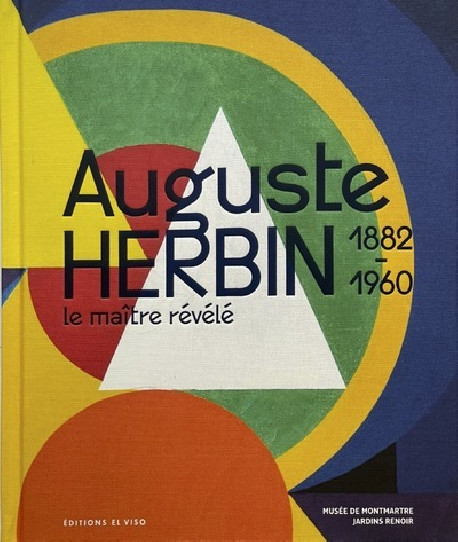No products
Product successfully added to your shopping cart
There are 0 items in your cart. There is 1 item in your cart.
Our webstore uses cookies to offer a better user experience and we consider that you are accepting their use if you keep browsing the website.

20th Century Painting
- New Art Books
- Exhibition catalogue
- Highlights
- Art Book Sale
- Museum's Shop & Gifts
- Bilingual art books and foreign editions
- Children's Books
- Art History
- Painting
- Architecture
- Sculpture
- Drawing & Engraving
- Photography
- Contemporary art
- Decorative Arts & Design
- Art Techniques
- Critics
- Entertainment art books
- Civilisations
- Partners Reviews
Auguste Herbin (1882-1960)
The painter Auguste Herbin is the best-kept secret of the modern art adventure. Yet he played an active part in all the creative breakthroughs of the 20th century: fauvism, cubism, abstraction. The man who lived at the Bateau-Lavoir for eighteen years achieved, in his ultimate style, a plastic alphabet with universal appeal.
Shipped within 5 to 10 days
| Model | 9788412679595 |
| Artist | Auguste Herbin |
| Author | Céline Berchiche, Mario Choueiry, Peter Kropmanns, Serge Lemoine |
| Publisher | Musée de Montmartre / El Viso |
| Format | Ouvrage relié |
| Number of pages | 192 |
| Language | Bilingue Français / English |
| Dimensions | 280 x 230 |
| Published | 2024 |
| Museum | Musée de Montmartre, Paris |
Exhibition Catalogue Auguste Herbin, presented at Musée de Montmartre, Paris (15 march - 15 september 2024).
The catalogue retraces the painter's seven creative periods: postimpressionism, fauvism, cubism, monumental objects, new figuration, first and second abstraction, often with never-before-seen works. Here, Herbin regains his rightful place in the history of modern art, and presents us with first-rate works from each of his creative periods.
Spotted by the greatest dealers of the 20th century, Auguste Herbin was present at all the exhibitions that forged the history of the avant-garde. He was represented in the most legendary collections of the nascent 20th century, from the Germans Wilhelm Uhde and Henry Simms to the Russians Sergei Shchukin and Ivan Morozov. Herbin was exhibited throughout Europe. By 1905, he was one of the first Fauve painters. At the Salon des Indépendants in 1908, he showed Cubist works. By 1913, his international career had already been noticed by critics in France and abroad. His reliefs and monumental objects of the 1920s have no equivalent in France, but place him in the international avant-garde of constructivism and neoplasticism. His work is featured in the iconic catalog of the 1936 exhibition "Cubism and abstract art" at New York's brand-new Museum of Modern Art.
After a singular inner evolution punctuated by one of the most captivating realist about-turns in the so-called "Return to Order", he became the pioneer and promoter of pure abstraction, charged with humanity and exceptional clarity, in interwar France. Auguste Herbin's influence grew in the second half of the twentieth century. His ultimate pictorial language consisted of a plastic alphabet (1942), a radically object-free Esperanto that helped him assert a sovereign freedom. He became a mentor to future masters of geometric abstraction and Op Art, from Europe to the Americas. This exhibition is obvious for reasons that go far beyond the painter's crucial Montmartre years. Driven by an awareness of the absolute, as Jean Cassou wrote, he cultivated the discretion of a relentless worker. He left behind a multiple, original and singular body of work, that of a master in his own right.
Recently viewed items










